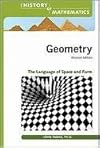
John Tabak
Författare till Probability and Statistics: The Science of Uncertainty
Om författaren
John Tabak, Ph.D., performed graduate work at the State University of New York at Stony Brook and received a degree in mathematics from Rensselaer Polytechnic Institute. He is the author of The History of Mathematics, a multivolume reference set, and Significant Gestures: A History of American Sign visa mer Language, a social and scientific history of one of North America's most unique languages. visa färre
Serier
Verk av John Tabak
Taggad
Allmänna fakta
Det finns inga Allmänna fakta än om den här författaren. Du kan lägga till några.
Medlemmar
Recensioner
Priser
Du skulle kanske också gilla
Statistik
- Verk
- 15
- Medlemmar
- 268
- Popularitet
- #86,166
- Betyg
- 4.1
- Recensioner
- 4
- ISBN
- 57
- Språk
- 1














Summary review: A lucid and thoughtful book, with some slightly flawed diagrams. A valuable work by a virtually unknown author.
Detailed review:
This book tries to show the involvement of the study and use of math with the study of the physical world. It starts with the Mesopotamians who seem to have kept things simple. They kept copious records of astronomical phenomena, and used the past to predict the future by identifying cycles in the movements of the planets. This worked pretty well. They used some simple algebra to make predictions, having noticed that the sun seems to move faster wrt. the stars during the summer than during the winter.
Later, the Greeks deployed geometry cleverly. They estimated the height of the Great pyramid at Giza. Next came the distance to the moon in relation to the size of the earth, done with geometry and observations of a lunar eclipse from two distinct locations yielding using parallax. Later, came an estimate of the distance to the sun in relation to the distance to the moon, taking into account that when the moon is half full, it forms the vertex of a right-angled triangle with its two other vertices at the sun and the earth. Unfortunately, the measurement of the necessary angle was way off, and so the estimate of the distance to the sun was off by several orders of magnitude. When Eratosthenes estimated the size of the earth a sense of scale was introduced.
Archimedes was something like the first mathematical physicist. He investigated levers and buoyancy, using mathematics to describe or predict forces. And he worked out the principal of exhaustion very thoroughly. One work of his was not discovered until the early 20th century, which is quite amazing.
Next we get to a discussion of mediaeval and renaissance scientific efforts, those preceding Galileo. Nicholas Oresme graphs velocities over time under constant acceleration, and makes some correct conclusions by looking at the areas under the graph, another rudimentary form of calculus. He also demonstrates in a straightforward way by proving that the harmonic series: 1/2 + 1/3 + 1/4 + ... diverges by grouping terms and showing that each group's sum is greater than or equal to 1/2 and that the number of these groups is infinite. He loved that stuff, apparently. The author feels that a lot of Copernicus' work was based on aesthetic preference, which is a valid thing, rather than science-y thought. Copernicus' importance lies in that he was the last one to propose the heliocentric view before it got accepted. (It is pointed out, in "The Invention of Science" that Edmond Halley simply had nothing to say about Copernicus, possibly because he considered his work not worth mentioning, while he certainly acknowledged the contributions of Tycho Brahe). Kepler was an odd one: his observation that the relative sizes of the orbits of the planets and the Platonic solids in a particular order could somehow be related was absolutely numerological; but the three formulae which he came up with for describing planetary motion required a lot of good solid math. This author does something nice: shows a table indicating that the third formula, relating time required to make a complete orbit to distance from the sun is not magically precise, but for Venus is off by more than 1%. (He should have put a decimal point everywhere in the table except for the values for the Earth, though). Leonardo da Vinci studies fluids and found a mathematical formula related the velocity of a fluid's flow to the area through which it flows.
Again, there is no underlying explanation for these phenomena, but the precise mathematical descriptions of the phenomena are really useful.
Next comes the new mathematical and technological advances. First, we have Simon Stevins, who invented a boat for sailing the flat beaches of the Netherlands at a, for the time, breathtaking pace. He studied static and hydrostatics and invented vector algebra and applied it to the study of forces. (There is a somewhat bad discussion of the process, like the method of exhaustion, to find the entire force exerted by a body of water on a wall enclosing it. The problem with the discussion is that in no part is the question of how the pressure varies with depth adequately discussed. As it happens, the variation is linear, so the math does work out.) Stevins is probably the one who did the dropping of a light and heavy thing and the observation that they seem to fall at the same rate, or very nearly. Galileo did many things, including decomposing the motion of a falling body into its horizontal and vertical components; more vector algebra.
There is an important aside. The Greeks had studied conic sections, very cleverly, but the invention of Cartesian coordinates made it possible to describe all sorts of curves. And, ellipses and parabolas had become practically interesting as they described planetary motion and the motion of falling bodies. Once these new curves existed, Fermat and Descartes became interested in their slope and the area underneath. John Wallis comes up with conservation of momentum (easily expressed with vector algebra), and does some clever math. In particular, he demonstrates that the Wallis product - (1/2 * 3/2) * (3/4 * 5/4) * (5/6 * 7/6) * (7/8 * 9/8) - converges to 2/pi. Clever guy!
Next comes Newton, who comes up with calculus. This book obligingly points out that a lot of people were already pretty slick at differentiation and integration, but it was Newton who tied these ideas together so well. Also it was Newton who claimed and then uses his law that the derivative of the momentum equals the sum of all the forces acting on it. Using this, he then did a bunch of math to show that his laws predicted something very like the elliptical orbits described by Kepler. How he did this is not described. We assume that we have an ever changing force between the sun and an individual planet, changing because the location of the sun wrt. the planet does change. The force will change direction and will vary with the distance. So the relative force on the planet at any given location can be calculated. Given that, the change in momentum can be calculated. And if that gives back a prediction of the orbit that actually exists, then this is good evidence that something may be correct. Of course, not knowing G, m_1, m_2 or r makes this computation a bit harder. Next comes Laplace, who works out a theory of the orbits of all the known planets, taking into account their influence on each other. Then, Herschel discovers a new planet. Then, LeVerrier predicts the existence and location of a new planet, Neptune, from the otherwise unexplained deviations of the orbits of the planets under their known gravitational influences.
Next comes Lavoisier and the conservation of mass, which is discussed in less detail and less mathematically.
The next chapter discusses the laws of thermodynamics. First, we have the invention of the pressure cooker by Denis Papin, a contemporary of Robert Boyle. The safety valve is identified as something that might do work. Thomas Savery invents a steam driven pump which is improved by Thomas Newcomen. Many years later, James Watt, a Scott, improved the steam engine tremendously. Joseph Black believes in the caloric theory of heat, but also makes many important observations, especially the one about how phase transitions require heat, but do not raise temperature. Black also discovers that different substances have different specific heats. Sadi Carnot subscribes to the caloric theory of heat. His Carnot engine is a precisely described theoretical engine. The engine performs work when placed between a heat source at one temperature and a heat sink at a lower temperature. The efficiency of the engine is the amount of work it can do divided by the amount of heat in consumes. Carnot showed that this efficiency was (1 - T_L/T_H), where T_L is the low temperature, T_H the high. Carnot eventually realizes that the caloric theory of heat is mostly wrong, but then dies of cholera in his 30s. The wealthy James Prescott Joule does many experiments to try to discover the mechanical equivalent of heat. Rudolf Clausius states the first law of thermodynamics: the energy of the universe is constant. The second law of thermodynamics has many formulations. One is that the entropy of the universe always increases. The other is that it is impossible to construct a cyclic engine, like a Carnot engine, whose only effect is the transfer of heat from a body at lower temperature to one at a higher temperature.
The next chapter, "Modern Ideas about Conservation Laws", is just too vague and general to convey much. It mentions Emmy Noether, one of my favorite mathematicians, and a Russian mathematician, Olga Oleinik, but communicates its subject in only the most general terms.
The last chapter is called "Natural Laws and Randomness". This begins with Mendel's pea experiments, explained very clearly. It's interesting though to consider if there was a different likely cause for the observed effects. I expect there was, but that the one that Mendel came up with was the simplest. The book seems to think that inheritance is inherently probabilistic, but doesn't convince me that it is more than practically probabilistic. More modern population genetics, and the Hardy-Weinberg law are also discussed. This law asserts that under certain conditions, gene frequencies in a population are stable. It's a fun law, but I wouldn't know how to use it.… (mer)